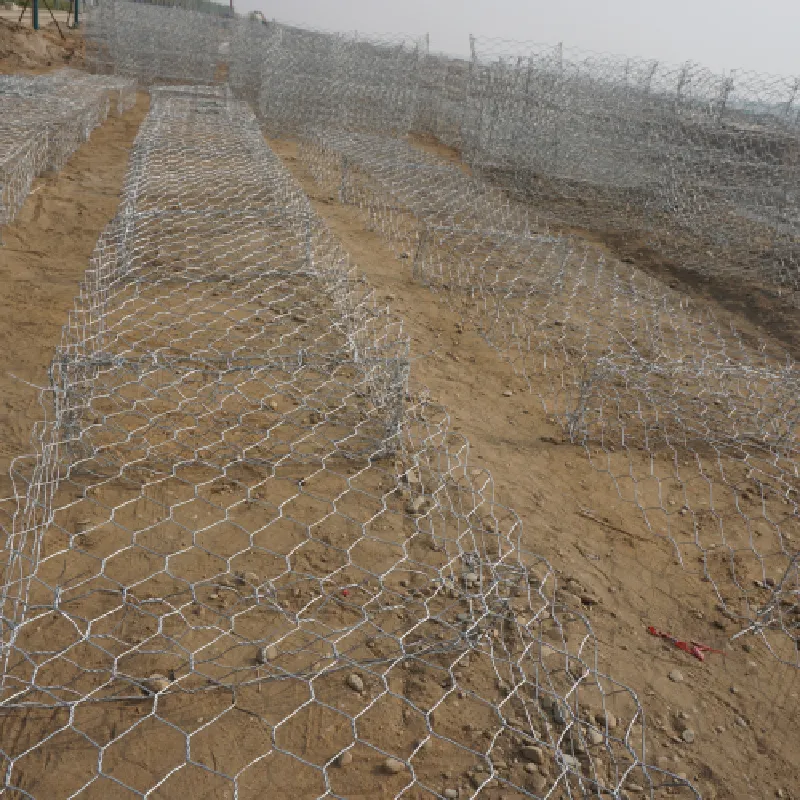
- Afrikaans
- Albanian
- Arabic
- Armenian
- Azerbaijani
- Basque
- Belarusian
- Bengali
- Bosnian
- Bulgarian
- Croatian
- Czech
- Danish
- Dutch
- English
- Esperanto
- Estonian
- Finnish
- French
- Galician
- Georgian
- German
- Greek
- hawaiian
- Hindi
- Hungarian
- Indonesian
- irish
- Italian
- Lao
- Latvian
- Lithuanian
- Luxembourgish
- Macedonian
- Maltese
- Myanmar
- Norwegian
- Polish
- Portuguese
- Romanian
- Russian
- Serbian
- Slovak
- Somali
- Spanish
- Swedish
- Thai
- Turkish
- Turkmen
- Vietnamese
Pro . 05, 2024 14:12 Back to list
gabion stone size
Understanding Gabion Stone Size A Comprehensive Guide
Gabions, which are wire mesh containers filled with stones or other materials, have increasingly become a popular solution in landscaping, erosion control, and civil engineering. Their versatility and effectiveness make them an ideal choice for various applications, from constructing retaining walls and decorative features to preventing soil erosion along riverbanks. One critical component of their effectiveness lies in the size and type of stones used in the gabions. This article explores the importance of gabion stone size and how it impacts the performance and aesthetics of gabion structures.
The Role of Stone Size in Gabion Construction
The size of the stones used in gabions plays a significant role in determining the structural integrity and stability of the assembled unit. Generally, the stones can range from small pebbles to larger boulders. The choice of stone size affects factors such as drainage, weight distribution, and the overall appearance of the gabion.
1. Stability and Weight Distribution When selecting stones for gabions, it is crucial to consider both stability and the weight distribution. Larger stones typically provide better stability due to their mass, which helps to resist the forces of water and soil. On the other hand, smaller stones can create gaps that may lead to instability and potential collapse, especially when subjected to strong water flow. As a rule of thumb, stones should ideally be larger than the mesh openings of the gabion to prevent them from slipping through.
2. Drainage Considerations Proper drainage is essential in gabion applications, especially when managing water runoff and preventing the build-up of hydrostatic pressure against structures. Using larger stones fosters better drainage, allowing water to flow through and preventing moisture from becoming trapped within the gabion. Conversely, smaller stones can create a barrier to water flow, potentially leading to issues such as erosion or water accumulation.
3. Aesthetic Appeal The appearance of the gabion structure is another factor influenced by stone size. Larger stones can lend a more rustic, natural look, making them ideal for landscape features such as garden walls. Smaller stones, with their uniform appearance, might be more suitable for modern applications where a sleek, clean look is desired. The choice of stone size will therefore also reflect the overall theme of the landscape or structure being created.
gabion stone size

Types of Stones Used in Gabions
While the stone size is essential, so is the type of stone used in gabions. Commonly employed materials include granite, limestone, river rock, and basalt, each contributing unique properties to the gabion structure. Granite, for example, is known for its durability and resistance to weathering, making it an excellent choice for long-lasting gabions. Meanwhile, river rocks offer a smooth surface and a natural aesthetic.
Standard Sizes and Selection Guidelines
In most cases, the recommended stone sizes for gabions range from 4 to 12 inches in diameter. However, the specific application may dictate different requirements. For instance, for gabions used to support heavy earth loads or significant hydraulic pressures, larger stones might be more appropriate.
When selecting stones, it is advisable to choose a mix of sizes to create a more stable and aesthetically pleasing structure. This approach not only encourages better interlocking of stones but also enhances drainage characteristics.
Conclusion
The size of the stones used in gabions is crucial for ensuring stability, enhancing drainage, and achieving the desired aesthetic appeal. By understanding the different implications of stone size, designers and builders can create more effective gabion solutions tailored to their specific needs. Whether constructing a decorative garden wall or an erosion control structure, careful consideration of gabion stone size will contribute to the success of the project. With the right materials and knowledge, gabion installations can withstand the test of time while providing both functionality and beauty in the landscape.
-
Razor Wire For Sale - Buy High-Security Concertina Wire
NewsAug.30,2025
-
Shop Galvanized Horse Panels for Sale | Durable & Secure Fencing
NewsAug.29,2025
-
Wholesale T Posts: Bulk Metal & Steel T Posts for Sale
NewsAug.28,2025
-
Comprehensive Guide to Wire Mesh Solutions: Security, Durability, and Customization
NewsAug.24,2025
-
Comprehensive Guide to Welded Fencing Solutions: Durability, Security, and Style
NewsAug.24,2025
-
Comprehensive Guide to Livestock Fence Panels: Safety and Efficiency for Your Animals
NewsAug.24,2025









